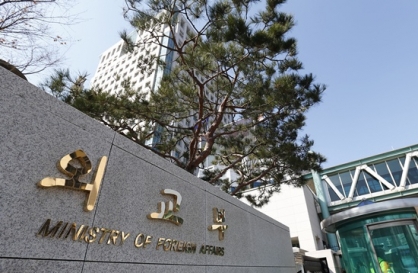MANILA (Yonhap News) ― Helweena Sadorra is a self-acknowledged fanatic of “hallyu,” or the Korean Wave, the popular culture from South Korea that has permeated the entire globe from Asia to America to Europe and the Middle East. So when she landed a job at the Korean Cultural Center in Manila, she had high hopes of promoting active exchanges between South Korea and her home country.
She quit her job last month and says the exchanges are lopsided, and there is too much of a business side to hallyu.
Sadorra was a student at the University of the Philippines, majoring in Philippine Studies, in 2005 when the manager of her dormitory she was sharing the room with at the time introduced her to Korean dramas on television. It was when the Korean Wave was gaining momentum in Southeast Asia, where hallyu still has an especially large fan base. “That started my curiosity,” she said.
She quit her job last month and says the exchanges are lopsided, and there is too much of a business side to hallyu.
Sadorra was a student at the University of the Philippines, majoring in Philippine Studies, in 2005 when the manager of her dormitory she was sharing the room with at the time introduced her to Korean dramas on television. It was when the Korean Wave was gaining momentum in Southeast Asia, where hallyu still has an especially large fan base. “That started my curiosity,” she said.

“I watched a lot, over 100 telenovelas since I got hooked into it in 2005,” said Sadorra, now 29. Three years later, she boarded a plane to South Korea, began studying at Korea University of Technology and Education, and learned the Korean language.
Coming back to Manila in 2009, she began teaching English to Koreans. She met a Korean student, fell in love and was struck by reality four months later. “When his parents found out about us, they literally trapped him from here to Korea,” she said. Sadorra could not understand what was going on. “That left a mark in me and I began questioning cultural differences,” she said.
When she started working at the Korean Cultural Center in 2010, she wanted to organize projects that would bring together Filipinos and Koreans, to arrange meaningful exchanges and help people of two sides understand each other. She felt ready for the job, having had the Korean experience and having majored in Philippines Studies in college. The kinds of exchanges she had in mind, Sadorra said, weren’t being realized, however, and she felt she never really reached what she hoped.
The Korea Foundation for International Culture Exchange (KOFICE) has been sponsoring conferences exploring Korean culture in Southeast Asia since 2007. Sadorra worked on getting academics and practitioners in the Philippines together with their counterparts from South Korea, talking about the impact hallyu leaves on her home country and pushing cultural exchange to a new level between the two nations.
She wrote the proposal for the hallyu conference in Manila.
After the proposal was accepted KOFICE gave out a grant to organize a forum. After discussing the objectives of the forum with her boss, Sadorra decided to drop some of her ideas such as including an actress of a Filipino spin-off from a Korean drama.
There were doubts among the organizers that a Filipino actor would add much to an academic discussion on the Korean Wave.
Korean officials talk about “two-directional” exchanges in culture, between people to people, Sadorra said, about bringing Filipino dramas and songs to the Korean people.
“They always say that,” she said, “Yes, the film festival in Busan invites Filipino films but besides that I cannot see much effort to really trigger an exchange.”
Sadorra also points to the business-dominated side of hallyu in the Philippines and elsewhere.
The Korean Wave, besides being a cultural product, has also become an export item creating big streams of revenue. Professional services firm PricewaterhouseCoopers estimates the Korean culture business will skyrocket over the next decade with the economic impact of the Korean Wave climbing from $12 billion in 2012 to $57 billion in 2020. If true, Korean culture could well be on the path to becoming as successful as the country’s shipbuilding, auto and IT industries. And those figures do not include byproducts such as cosmetic sales or coffee shop brands from South Korea which are getting popular after being featured in TV shows.
Licensing is also a big part of the deal. Many of the Korean dramas broadcast in the Philippines are licensed programs that have been reshot with Filipino actors and actresses, slightly tweaked and adjusted to the local market.
Crisanta N. Flores, a professor of Philippine Studies at the University of the Philippines and a follower of Korean cultural influence in the country, sees another potential problem from the inflow of Korean culture ― Filipinos forgetting their own entertainment culture.
-
Articles by Korea Herald




![[Weekender] Korean psyche untangled: Musok](http://res.heraldm.com/phpwas/restmb_idxmake.php?idx=644&simg=/content/image/2024/05/02/20240502050841_0.jpg&u=)

![[Eye Interview] 'If you live to 100, you might as well be happy,' says 88-year-old bestselling essayist](http://res.heraldm.com/phpwas/restmb_idxmake.php?idx=644&simg=/content/image/2024/05/03/20240503050674_0.jpg&u=)











![[Herald Interview] Director of 'Goodbye Earth' aimed to ask how we would face apocalypse](http://res.heraldm.com/phpwas/restmb_idxmake.php?idx=652&simg=/content/image/2024/05/03/20240503050732_0.jpg&u=)
